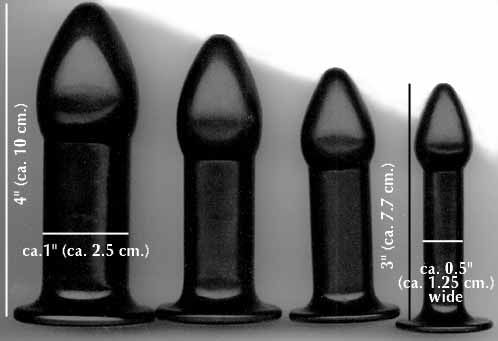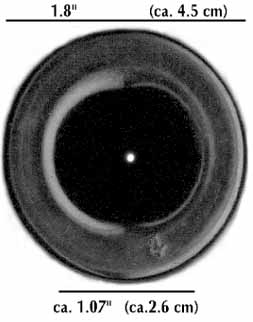See an ad for Dr. Schenk's
Mandrake Pills, appearing on a trade
card for journalist Nellie
Bly.
See Dr. Grace Feder Thompson's letter
appealing for patients, Lydia E. Pinkham's
Vegetable Compound, and Orange Blossom
medicine, Dr. E. C. Abbey's The Sexual System and
Its Derangements, which emphasises
masturbation, as doe Dr. Pierce, and several
small boxes of old
American patent medicine for women.
And, of course, the first Tampax AND -
special for you! - the American fax
tampon, from the early 1930s, which also
came in bags.
See a Modess True
or False? ad in The American Girl
magazine, January 1947, and actress Carol Lynley in
"How Shall I Tell My Daughter" booklet ad
(1955) - Modess . . .
. because ads (many dates).


|

Constipation relief?
Dr. Young's Improved Rectal Dilators for
the Auxiliary Treatment of Piles and
Constipation (U.S.A., 1900?-1940?)
Whatever
physiological/anatomical theory
Dr. Young had in mind when he made
these objects - he wrote
that gradually widening the anus
with his devices will treat
constipation - they respond to the
desire for relief of apparently
the many people afflicted with
constipation in America (read a chapter of a
book for women about the
subject). Read the instructions.
And these
dilators find a place in an article from The New
England Journal of Medicine
showing their intended purpose.
But there's another use for the
dilators, one that Rachel
Maines uncovered for
vibrators advertised in late 19th
century and early 20th century
American knitting magazines: sexual pleasure.
Some people slide objects into
their or their sexual partner's
anus (and rectum) for fun. No, no!
I'm not kidding!
Consider the shape of the
dilators: they look like penises
to me! Of course, maybe the bulge
on the business end just gives the
sphincter something to grab, a
practical use. And just because
that bulging end has a hole in it
(see the picture, below), kinda
like the opening of the urethra,
doesn't mean that it doesn't allow
air to escape.
Products are not always used for
what they're advertised to do.
Alcohol-loaded patent medicine
allowed respectable ladies as late
as the 1960s - maybe even today -
to get a buzz without outing
themselves by visiting a liquor
store (for example, Mrs.
Pinkham's Vegetable
Compound). Teenage boys used to
buy booklets with pictures of nude
women that were supposedly made to
aid artists.
Whatever the real purpose of
these items - maybe it was both -
on the inside bottom of the box
(too fuzzy to show) Dr. Young
offered an even bigger one, No. 5,
for $1.50, postpaid, after the
customer had master - um, mastered
1-4. What was going on in the
bedrooms and bathrooms of America?
Maybe nothing new.
SarahAnne Hazlewood
generously donated the dilators
to this museum.
Read the instructions
and see the box.
|
|

|
The dilators are
made of a fairly heavy, black
shiny plastic-like material,
possibly Bakelite, and are loose
in the box.
|
|
Below:
Each dilator has a flange
on the bottom (pictured
above) - the
light-colored part
surrounding the dark
center in the picture below
- possibly to prevent
the dilator from
disappearing into the
rectum. Note the 4,
which means size 4.
Lacking anything more
interesting to do, it
also allows the owner to
line them up on a
horizontal surface,
maybe to admire them, as
I did, above.
A hole
about 3 mm in diameter
penetrates the end that
enters the anus (white
spot, below, which is at
the far end), probably
to allow air to escape.
|
Below:
the arrow points to the
hole in the front of the
dilator.
|
 |
|
|
© 2000 Harry Finley. It is illegal to
reproduce or distribute any of the work on
this Web site in any manner
or medium without written permission of the
author. Please report suspected violations
to hfinley@mum.org
|